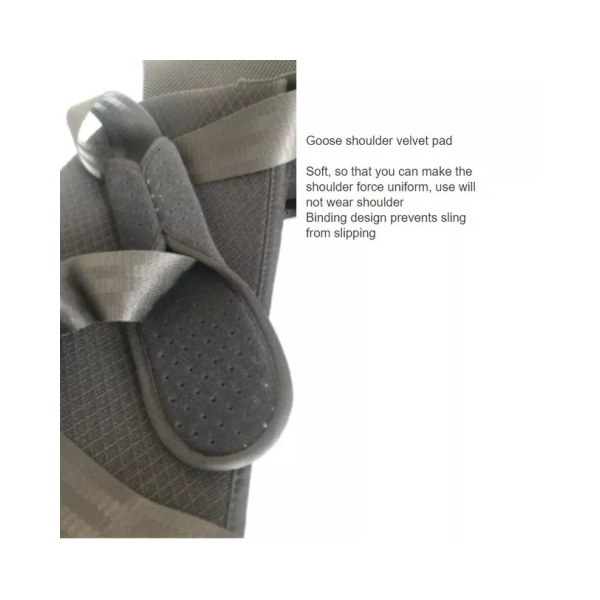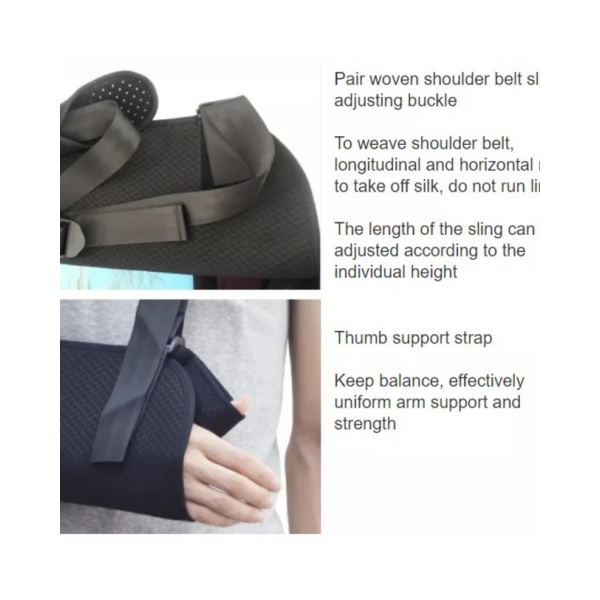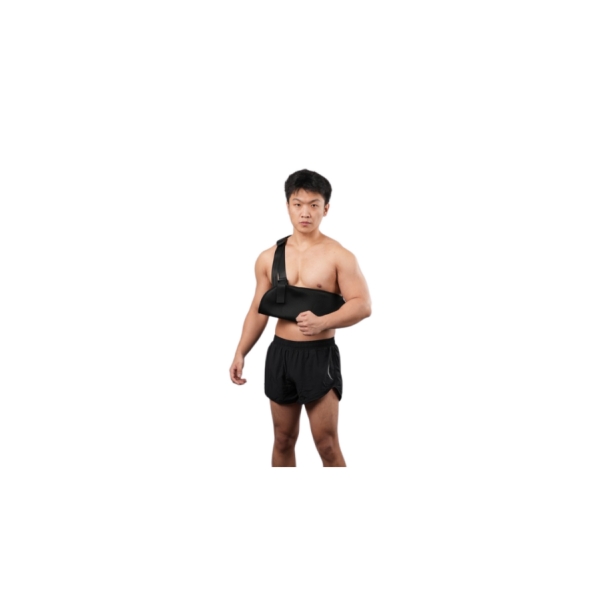
When it comes to recovering from an injury or surgery involving the upper body, wearing an arm sling strap can be an essential part of the healing process. A sling provides support, stability, and protection to the injured arm or shoulder, allowing it to rest and recover effectively. In this comprehensive guide, we will walk you through the proper way to wear a sling, ensuring optimal comfort and healing. Follow these guidelines to maximize your recovery and regain your mobility faster.
Wearing a sling is crucial for various reasons, including:
1) Immobilization
A sling restricts movement, preventing further injury and promoting the healing of damaged tissues.
2) Pain Relief
By supporting the weight of the arm or shoulder, a sling helps alleviate pain and discomfort.
3) Swelling Control
The compression provided by a properly worn sling can reduce swelling and inflammation.
4) Faster Recovery
With the appropriate use of a sling, the healing process can be accelerated, allowing you to regain function sooner.
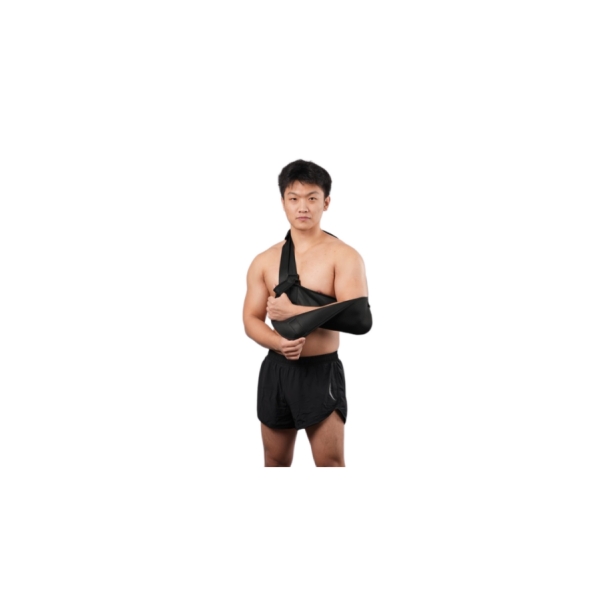
Follow these steps to ensure that you wear your sling correctly:
1) Step 1: Prepare the Sling
Choose the right sling for your specific injury or surgery.
Consult your healthcare provider for guidance. Look for any wear or damage indications on the sling. Verify the condition and integrity of all the straps and fasteners.
2) Step 2: Positioning the Sling
Stand or sit in a comfortable position.
Gently slide the injured arm into the sling.
Adjust the sling so that it supports the weight of the arm and places it in a comfortable and natural position.
The elbow should rest at a 90-degree angle while the hand should be slightly elevated.
3) Step 3: Adjusting the Straps
Fasten the strap around the neck, ensuring it is snug but not too tight.
Secure the strap around the waist or torso to provide additional support and prevent the sling from slipping.
Make sure the straps are not twisted and are evenly adjusted for proper weight distribution.
4) Step 4: Checking for Proper Fit
Ensure that the sling fits snugly but does not cause excessive pressure or discomfort.
The hand and fingers should not feel cold or tingly, indicating restricted blood circulation.
Check that the shoulder and arm are adequately supported and that there are no areas where the sling is too loose or too tight.
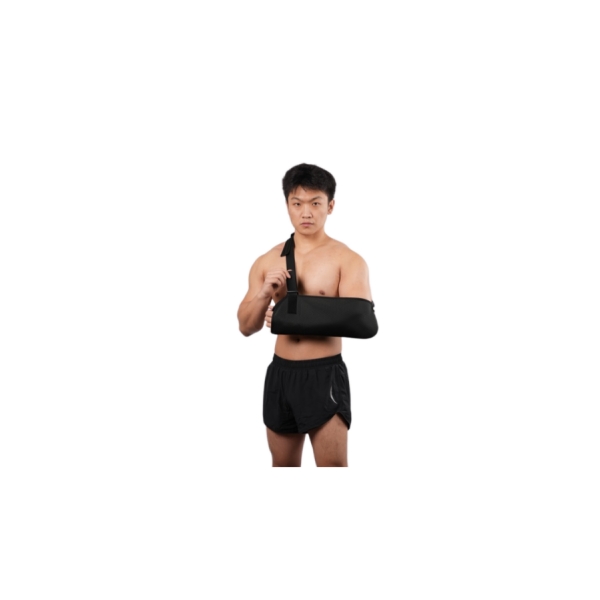
Wearing a shoulder sling is an important part of the recovery process for individuals with shoulder injuries or surgeries. However, there are common mistakes that people make when wearing a shoulder sling, which can hinder the healing process and prolong recovery time. In this article, we will highlight these common mistakes and provide guidance on how to avoid them. By being aware of these errors and taking proactive measures, you can ensure that you wear your shoulder sling correctly and facilitate a smoother and faster recovery.
1) Mistake 1: Incorrect Positioning of the Sling
One of the most common mistakes is wearing the shoulder sling in an incorrect position. This can lead to discomfort, inadequate support, and compromised healing. Avoid the following errors:
Sling too low: Placing the sling too low on the arm can cause the shoulder to droop, potentially leading to strain on the muscles and ligaments.
Sling too high: Wearing the sling too high on the arm can restrict blood circulation and create discomfort. Additionally, it may obstruct the healing process.
2) Mistake 2: Incorrect Strap Adjustment
Another common mistake is improper adjustment of the sling straps. This can result in inadequate support, excessive pressure, or restricted blood circulation. Avoid the following errors:
Straps too loose: If the straps are not tightened adequately, the sling may not provide the necessary support, potentially leading to instability and discomfort.
Straps too tight: Overly tight straps can restrict blood circulation, cause discomfort, and impede the healing process.
3) Mistake 3: Neglecting Regular Adjustments
As the healing process progresses, the swelling in the shoulder may decrease, and the arm's range of motion may improve. Neglecting to regularly adjust the sling straps can result in improper support and discomfort.
4) Mistake 4: Engaging in Inappropriate Activities
Engaging in activities that strain the injured shoulder can be detrimental to the healing process. Common mistakes include:
Lifting heavy objects: Heavy lifting can put excessive strain on the healing tissues and delay the recovery process.
Participating in rigorous physical activities: High-impact or strenuous activities can cause further damage to the shoulder and impede the healing process.
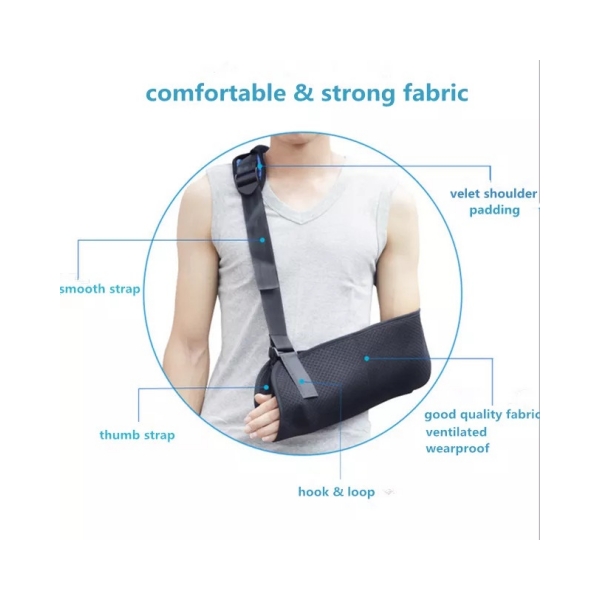
1) Split Strap Technology
Split Strap Technology addresses this issue by providing a more comfortable wearing experience. The split design allows for better flexibility and adaptability, conforming to the individual's body shape and reducing friction against the skin. This enhanced comfort encourages longer and uninterrupted use of the sling, promoting proper immobilization and supporting the healing process.
2) Unique Ergonomic Design
The unique ergonomic design of the shoulder sling is specifically tailored to fit the natural contours of the shoulder. It follows the curvature of the shoulder and upper arm, ensuring a snug and secure fit. This improved range of motion prevents muscle atrophy and facilitates a smoother transition back to regular activities once the healing is complete.
3) Adjustable Length
The adjustable length feature in shoulder slings offers numerous benefits, including versatility for different body types, customized support, immobilization, accommodation of changing needs, convenience and ease of use, and cost-effectiveness.
4) High-Quality Material-Mesh Fabric
The use of high-quality mesh fabric in shoulder slings offers significant benefits, including enhanced breath-ability, moisture-nicking properties, lightweight and flexibility, durability, and easy maintenance.
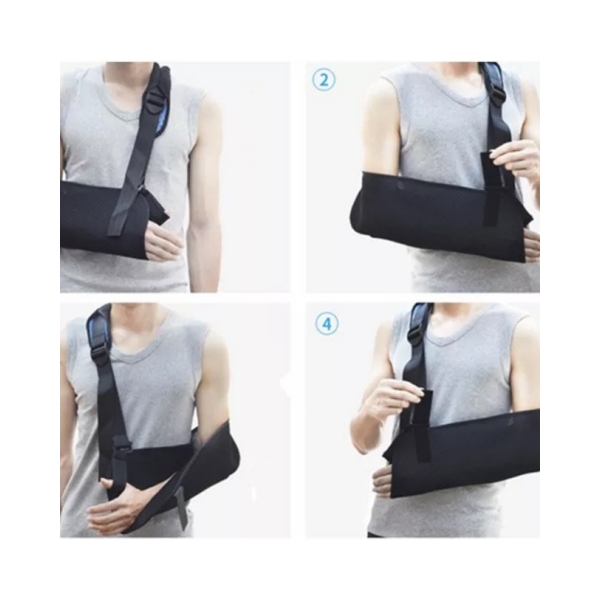
Wearing an arm sling strap properly is vital for a successful recovery from upper body injuries or surgeries. By following the step-by-step guide provided in this article and being aware of these common mistakes and taking proactive measures to avoid them, you can ensure that you wear your shoulder sling correctly and promote a smoother and faster recovery.
What we provide is not only a sling for the arm, but also its high quality and perfect pre-sales and after-sales process. Our enterprise takes service as the first priority, and every product tries to meet the expectations of every customer. We assure the quality of our customized products, which undergo several processes before being delivered to our retailers. If you require a sling, we encourage you to reach out to us.
